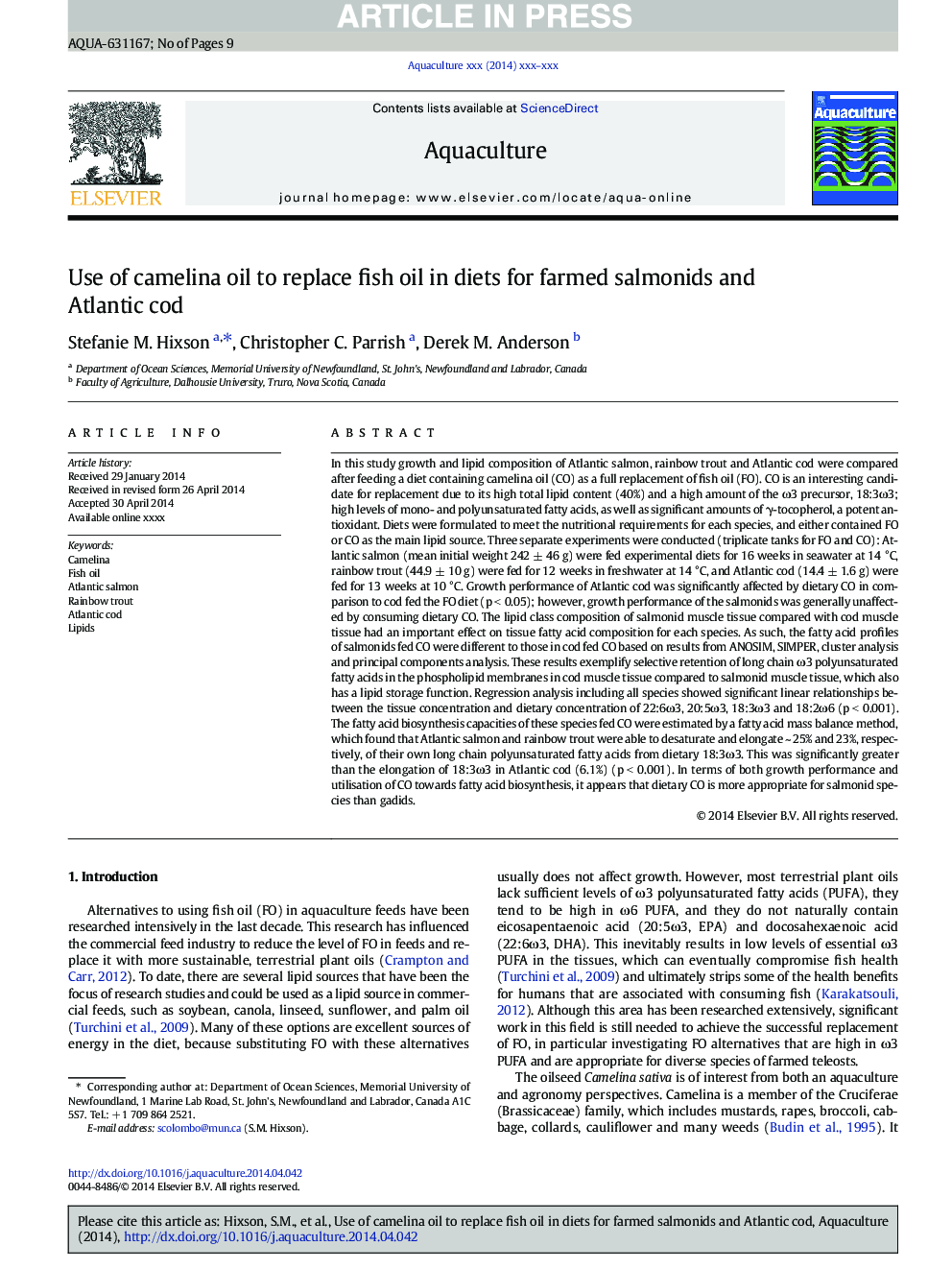| Article ID | Journal | Published Year | Pages | File Type |
|---|---|---|---|---|
| 8494999 | Aquaculture | 2014 | 9 Pages |
Abstract
In this study growth and lipid composition of Atlantic salmon, rainbow trout and Atlantic cod were compared after feeding a diet containing camelina oil (CO) as a full replacement of fish oil (FO). CO is an interesting candidate for replacement due to its high total lipid content (40%) and a high amount of the Ï3 precursor, 18:3Ï3; high levels of mono- and polyunsaturated fatty acids, as well as significant amounts of γ-tocopherol, a potent antioxidant. Diets were formulated to meet the nutritional requirements for each species, and either contained FO or CO as the main lipid source. Three separate experiments were conducted (triplicate tanks for FO and CO): Atlantic salmon (mean initial weight 242 ± 46 g) were fed experimental diets for 16 weeks in seawater at 14 °C, rainbow trout (44.9 ± 10 g) were fed for 12 weeks in freshwater at 14 °C, and Atlantic cod (14.4 ± 1.6 g) were fed for 13 weeks at 10 °C. Growth performance of Atlantic cod was significantly affected by dietary CO in comparison to cod fed the FO diet (p < 0.05); however, growth performance of the salmonids was generally unaffected by consuming dietary CO. The lipid class composition of salmonid muscle tissue compared with cod muscle tissue had an important effect on tissue fatty acid composition for each species. As such, the fatty acid profiles of salmonids fed CO were different to those in cod fed CO based on results from ANOSIM, SIMPER, cluster analysis and principal components analysis. These results exemplify selective retention of long chain Ï3 polyunsaturated fatty acids in the phospholipid membranes in cod muscle tissue compared to salmonid muscle tissue, which also has a lipid storage function. Regression analysis including all species showed significant linear relationships between the tissue concentration and dietary concentration of 22:6Ï3, 20:5Ï3, 18:3Ï3 and 18:2Ï6 (p < 0.001). The fatty acid biosynthesis capacities of these species fed CO were estimated by a fatty acid mass balance method, which found that Atlantic salmon and rainbow trout were able to desaturate and elongate ~ 25% and 23%, respectively, of their own long chain polyunsaturated fatty acids from dietary 18:3Ï3. This was significantly greater than the elongation of 18:3Ï3 in Atlantic cod (6.1%) (p < 0.001). In terms of both growth performance and utilisation of CO towards fatty acid biosynthesis, it appears that dietary CO is more appropriate for salmonid species than gadids.
Related Topics
Life Sciences
Agricultural and Biological Sciences
Aquatic Science
Authors
Stefanie M. Hixson, Christopher C. Parrish, Derek M. Anderson,
